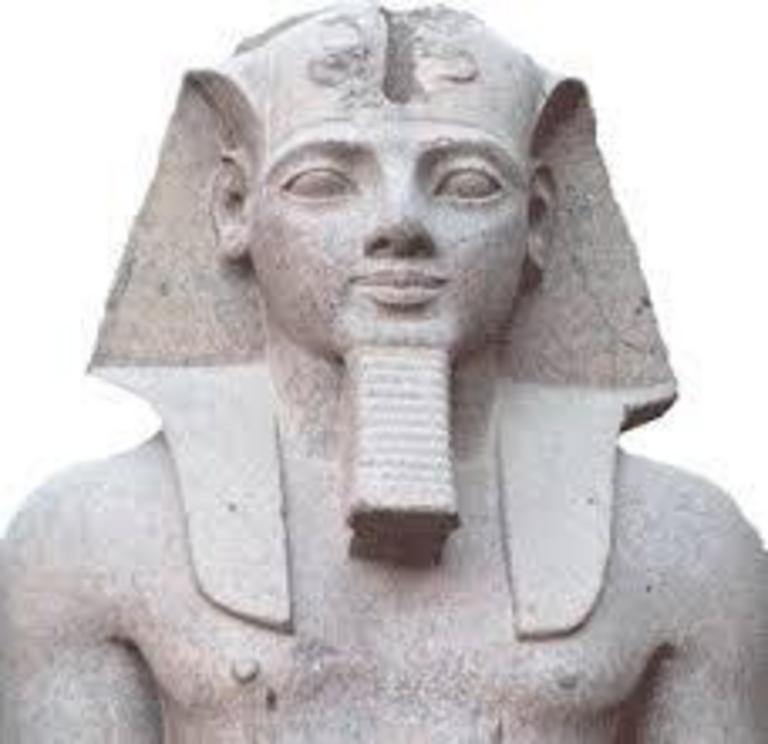Menes—Egypt’s first Pharaoh who received the throne directly from the God Horus
Menes—he who endures—is believed to have been Egypt’s first mortal Pharaoh, who is credited with unifying Lower and Upper Egypt.
Menes’ predecessors where possibly Horus Ka or Horus Scorpion II.
It is believed that Menes—aka Narmer—received the throne of Ancient Egypt directly from the God Horus.
According to historical accounts, Menes was the first pharaoh of the first dynasty, with whom the human history of Egypt began; He had been ‘implanted’ directly by the gods, to whom he was supposedly related.
Along with the unification of upper and lower Egypt, this historical feat also brought writing, art, agriculture and craft techniques to the land of the Pharaohs.
Obviously, such processes were much slower than that myth tells us; in particular, the political unification was the final result of long struggles to impose a central power on the decentralism of local communities. The last phase was the unification of Upper and Lower Egypt, that is, the unification of the valley and the delta of the Nile.
The latter was the work of Narmer, a pharaoh of Upper Egypt, who has been identified as the legendary mortal pharaoh Menes. Narmer appears represented crushing his enemies in the famous “Narmer Palette” also known as the Great Hierakonpolis Palette or the Palette of Narmer, found in Hierakonpolis.
The date commonly given for the beginning of Menes’ reign is 3100 BC.
Other major estimates that use both the historical method and radiocarbon dating place it in the range 3273—2320 BC.
This Palette contains what experts believe are the earliest hieroglyphic inscriptions ever found, and it depicts the unification of Upper and Lower Egypt under the king Narmer.
On one side of the Palette, we see the Pharaoh depicted with the bulbed White Crown of Upper Egypt. The other side of the stone depicts the king wearing the level Red Crown of Lower Egypt.
According to experts, the Narmer Palette provides one of the earliest known depictions of an Egyptian ruler.
In addition to the Narmer Palette, an ivory plaque excavated at Naqada bears both the names “Aha” and “Men” (Menes).
But despite the fact that Menes is proven to have existed, his true identity is a subject of debate, although the general Egyptologist consensus identifies Narmer with the pharaoh Menes of the I dynasty, who is also credited with the unification of Egypt as the first pharaoh. This conclusion is solely based on the above-mentioned palette.
Narmer or Menes?
History tells us they may have been one the same.
If we take a look at the work of Manetho, a 3rd-century-BCE Egyptian historian, we will find that he refers to Egypt’s first (mortal) pharaoh as Menes. Furthermore, the 5th-century-BCE Greek historian Herodotus referred to Menes as Min, and two native-king lists of the 19th dynasty (13th century BCE) call him Meni.
Modern scholars, however, have inconclusively identified the legendary Menes with one or more of the archaic Egyptian kings bearing the names Scorpion, Narmer, and Aha.
According to the Turin Papyrus and the History of Herodotus, he is also the founding father of Memphis—the capital of ancient Egypt during the Old Kingdom
Ancient Egyptian priests told the Greek writer Herodotus – who considers himself the founder of history as a scientific discipline – that to build the city, Menes ordered to divert the Nile channel and build a dam.
One of the most amazing details about Menes’ reign was written down by Herodotus who claimed that Menes was responsible for the draining of the plain of Memphis and founding the Egyptian capital there. According to Manetho, Menes reigned for 62 years and was killed by a hippopotamus.
Menes is also believed to have introduced the worship of Gods and sacrifice to ancient Egypt.
If we take a look at the work of Pliny, we will see that he credit’s Menes as the bringer of wiring to ancient Egypt.

